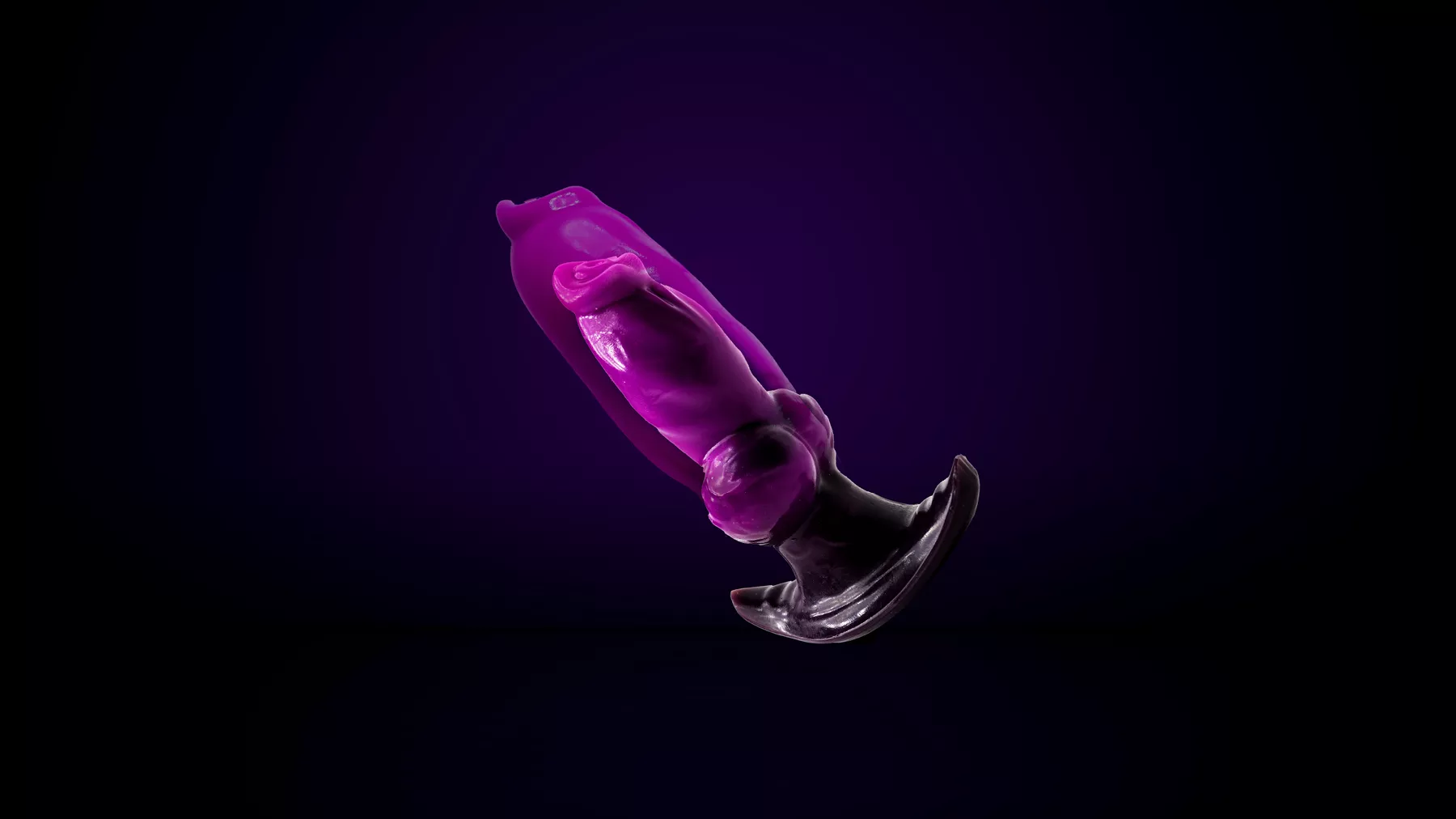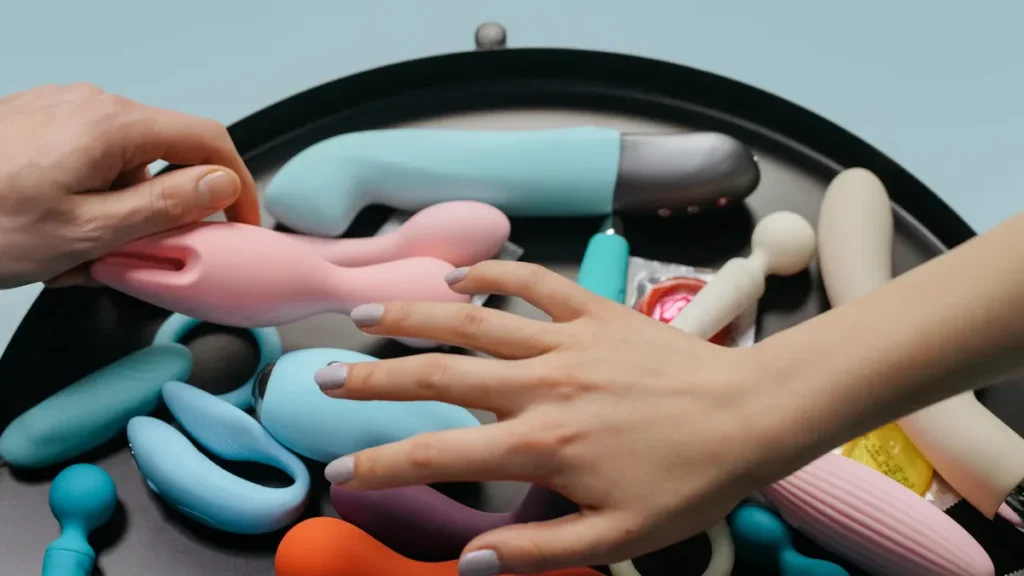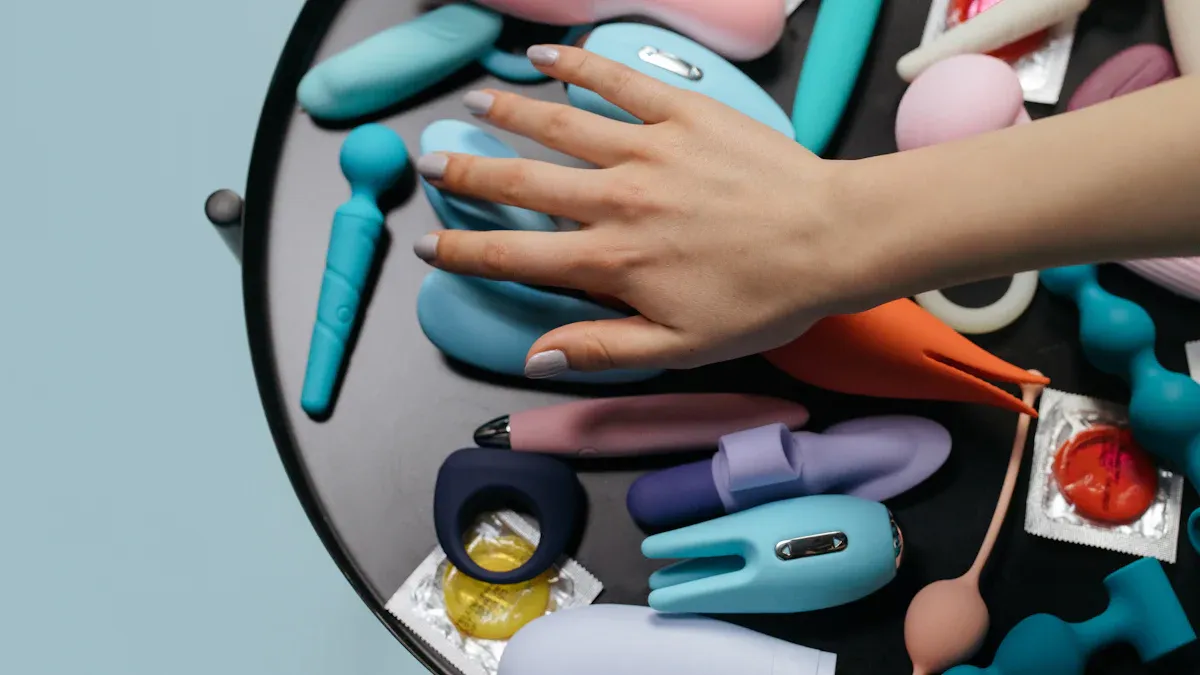Are PVC Dildos Safe for Use in 2025
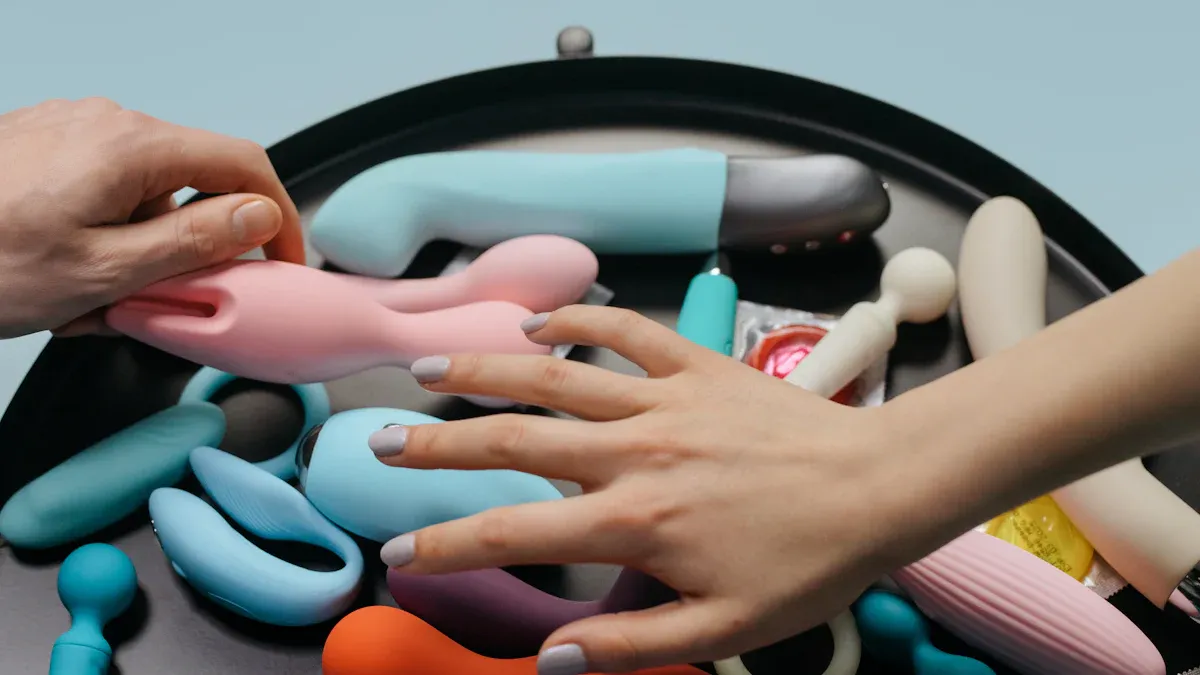
I see more people asking if pvc dildos are safe in 2025. I always look for the newest health facts before I buy a new dildo. There are many kinds like Heated Dildos, Snake Dildos, and Dinosaur Dildos. I found out that pvc dildos can let out phthalates and other chemicals. This happens more when you use lubricants. The porous pvc lets bacteria and mold grow. This can make health risks go up. Some people say safety is better now. But I still see labels that are not clear or true. I always think about the health risks of pvc. I compare them to safer choices for my own health.
PVC Dildos Overview
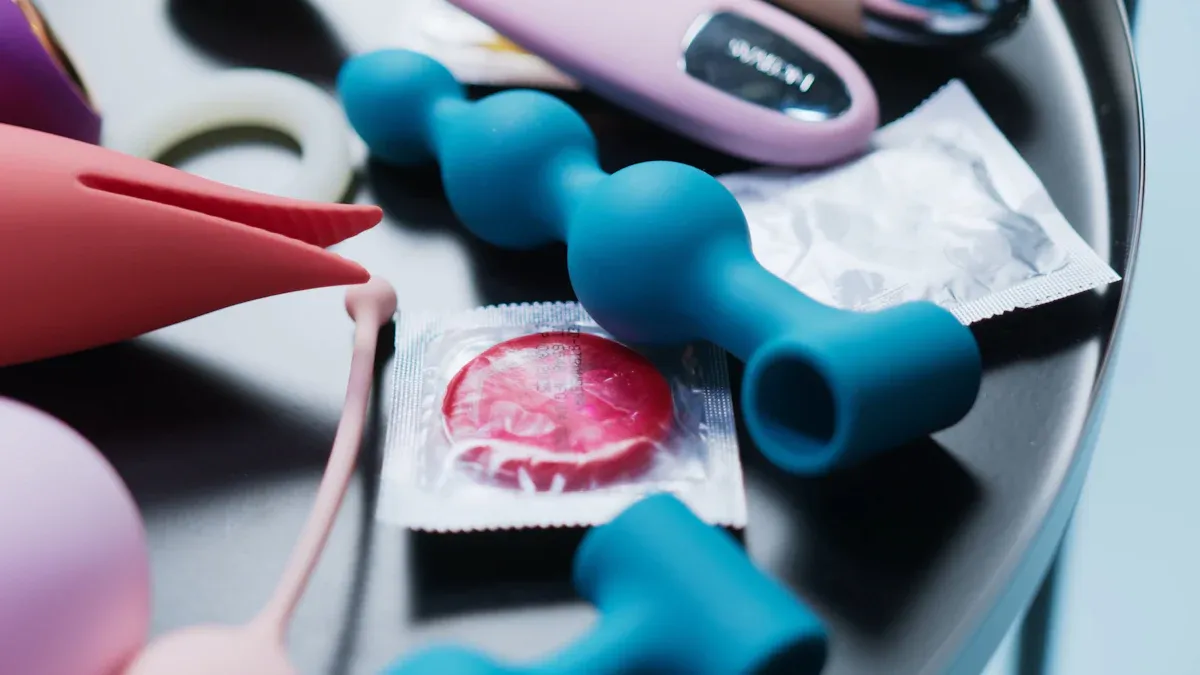
What Is PVC
When I started learning about sex toys, I wanted to know what they were made of. PVC means polyvinyl chloride. This is a strong and cheap plastic. Companies use it in many things, like pvc sex toys. To make pvc soft for dildos, they add plasticizers. These are chemicals like phthalates. They help make pvc bendy and shiny. I see that pvc sex toys look clear or jelly-like. They also feel a little sticky. To make a pvc dildo, workers mix pvc with other stuff. Then they pour it into a mold and let it cool. This way, companies can make dildos in many shapes and sizes. But pvc is porous. That means it has tiny holes. These holes can trap bacteria. This makes cleaning pvc sex toys harder and less safe than some other materials.
Why Use PVC in Sex Toys
I notice pvc sex toys are everywhere. They are easy to find and cost less than others. Here are some reasons why companies use pvc for dildos:
PVC is easy to shape into many dildo designs.
It is cheap, so pvc dildos cost less for people.
The material is simple to use, so companies can make lots of pvc sex toys fast.
Reason | Explanation |
|---|---|
Cost | PVC and jelly rubbers are cheap, so companies can make many dildos. |
Manufacturing | PVC is easy to mold, so it works for detailed dildo shapes. |
Regulations | Many pvc sex toys are called “novelty,” so rules are not as strict. |
Health Concerns | Even with risks, pvc is still popular because it is cheap and flexible. |
Alternatives | Safer materials like silicone cost more, so pvc dildos are still common. |
I still see pvc sex toys in stores and online in 2025. Some companies use safer materials now. But pvc dildos are still a big part of what is sold. I always check what my dildo is made of before I buy it. I do this because I care about my health and safety.
Dildo Safety Risks
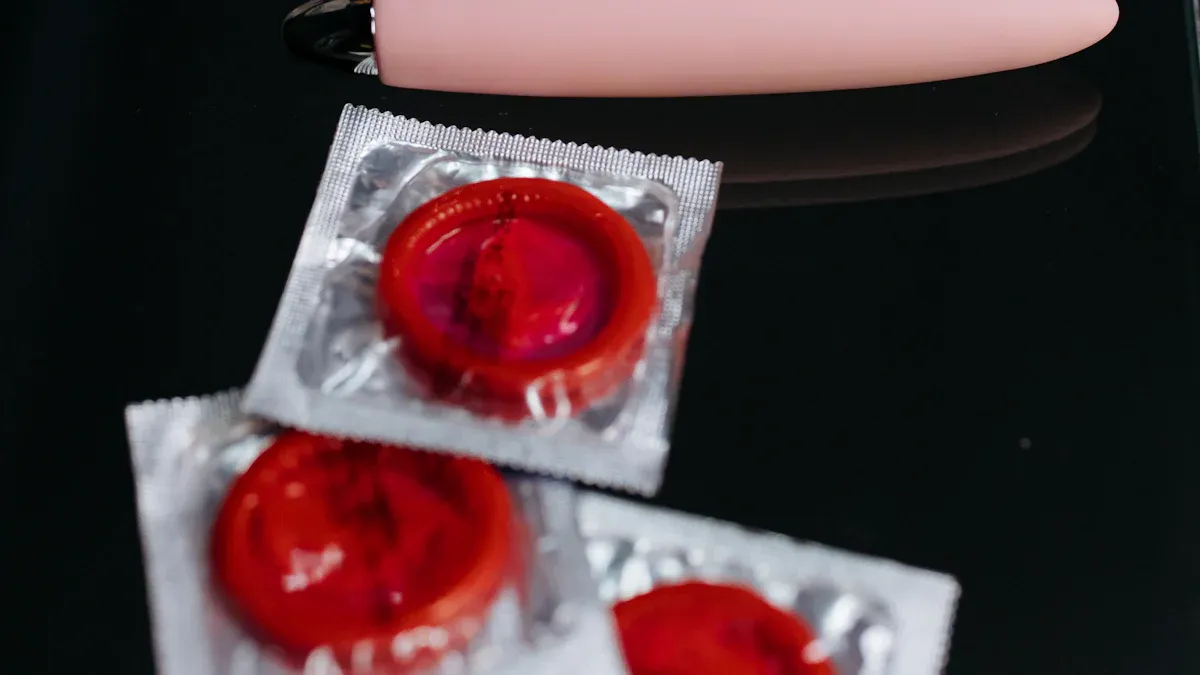
Chemical Exposure
When I look at pvc dildos, I always think about what chemicals might be inside. Many pvc sex toys use phthalates to make them soft and bendy. These chemicals do not stay locked in the plastic. They can leak out, especially when I use lube or clean the dildo. I learned that phthalates are linked to many health problems. They can cause issues with fertility, weight, and even how the brain develops. Some studies show that children exposed to phthalates may have lower IQ scores. I also read that phthalates can act like hormones in the body. This can mess with how the body grows and works.
Here is a table that shows some common chemicals found in pvc sex toys and their health risks:
Chemical/Material | Description/Use | Associated Health Risks/Concerns |
|---|---|---|
Phthalates | Make plastics flexible; found in pvc dildos | Linked to fertility issues, obesity, diabetes, asthma, and brain development problems |
Timethytin chloride | Sometimes found in sex toys | May harm the brain and unborn babies |
Phenol | Sometimes found in sex toys | May harm the brain and unborn babies |
Carbon disulfide | Sometimes found in sex toys | May harm the brain and unborn babies |
Toluene | Sometimes found in sex toys | May harm the brain and unborn babies |
Cadmium | Sometimes found in sex toys | May harm the brain and unborn babies |
Jelly | Contains phthalates | May cause health risks linked to phthalates |
PVC and Vinyl | Used to make sex toys soft and cheap | Contain phthalates linked to many health risks |
I see that these chemicals can get into my body through my skin. They can also get into the air or even into my mouth if I use the dildo for oral play. Some research shows that phthalates can bind to important enzymes in the body. This can hurt the immune system and make it harder for the body to fight off sickness. I always feel worried about the potential health risks from using pvc sex toys with these chemicals.
Porosity and Infection
I learned that pvc sex toys are porous. This means they have tiny holes that I cannot see. These holes can trap bacteria, mold, and even viruses. When I use a pvc dildo, germs can get stuck inside. Cleaning does not always remove all the germs. I read that even after washing, bacteria and viruses can stay on the toy. This makes it easy to get infections like yeast infections or bacterial vaginosis.
Porous toys like pvc dildos give bacteria a place to hide.
I find it hard to clean these toys well enough to make them safe.
Using a condom on a pvc dildo can help lower the risk of infection.
Non-porous toys, like silicone or glass, do not have these tiny holes. They are much easier to clean and keep safe.
Some studies show that people who do not clean their sex toys well, or who share them, get more infections. I saw that HPV can stay on a dildo even after cleaning. This makes me think twice before sharing or reusing a pvc sex toy. I always try to wash my toys before and after use, but I know that with pvc, I cannot get rid of all the germs. The health risks of pvc go up if I use the toy with a partner or switch between different types of play.
Degradation Signs
Over time, I notice that pvc dildos can start to look and feel different. Sometimes the color changes or the surface gets sticky. I have seen cracks or even a strong chemical smell, like a new shower curtain. These are signs that the pvc is breaking down. When this happens, more chemicals like phthalates can leak out. The toy can also become rough, making it easier for bacteria to stick to it.
Cracks, color changes, and sticky surfaces mean the dildo is getting old.
A strong smell shows that chemicals are coming out of the pvc.
If I store my pvc dildo touching other toys, it can get soft or change shape.
These changes make the toy less safe and can raise the risk of infection or irritation.
When I see any of these signs, I know it is time to stop using the toy. I always use a condom if I am not sure about the safety of my pvc sex toys. I want to protect my health and avoid any problems from using a damaged or old dildo.
“Phthalate-Free” PVC Dildo Claims
Label Meanings
When I look for pvc sex toys, I see “phthalate-free” on many labels. At first, I thought this meant the toy was totally safe. Now, I know that is not always true. “Phthalate-free” means there is less than 0.1% phthalates by weight. This follows a rule in Europe called REACH. The rule tries to keep some bad chemicals out of products. But there are no special safety rules just for sex toys. Companies do not have to list every chemical in pvc sex toys. Even if a toy says “phthalate-free,” it can still have other harmful things like phenol or cadmium. These can also be dangerous. The label only talks about phthalates, not all the chemicals in the toy.
Note: “Phthalate-free” does not mean the toy has no harmful chemicals. It just means the phthalates are under a certain amount.
Ongoing Concerns
I always want to know what is really inside my pvc sex toys. Recent lab tests show that even when phthalates are not found in “phthalate-free” pvc dildos, other chemicals can still be there. Some of these chemicals can hurt my health. Here is a table that shows what scientists have found in these toys:
Chemical Found | Description and Concerns |
|---|---|
Phthalates | Not found in tested “phthalate-free” pvc vibrators. |
DOTP (plasticizer) | Used instead of phthalates; thought to be safer but not much is known about it, especially for hormones. |
Timethytin chloride | Found in some sex toys; may hurt the brain and nerves. |
Phenol | Found in some toys; may affect how babies grow. |
Carbon disulfide | Found in some toys; can hurt the nervous system. |
Toluene | Found in some toys; can hurt the brain. |
Cadmium | Found in some toys; can cause problems as babies grow. |
Even if a pvc dildo does not have phthalates, it can still have other chemicals that might be bad for me. Some can hurt the brain, nerves, or how a baby grows. I also learned that pvc is still porous. Over time, it can break down and let out more chemicals. This makes me worry about using old or damaged pvc sex toys.
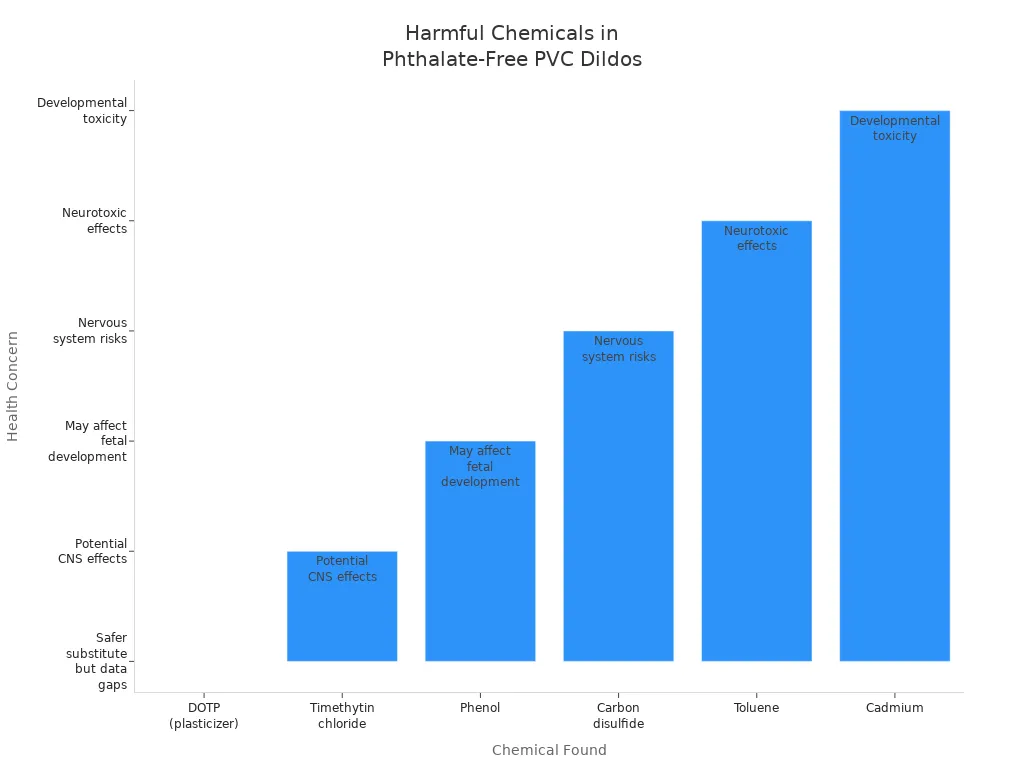
I always check labels, but I do not trust them all the way. I know that “phthalate-free” pvc does not mean the toy is totally safe. I try to pick non-porous toys when I can, because I want to stay healthy and avoid hidden dangers.
Safe Alternatives to PVC Sex Toys
Silicone
When I shop for a new dildo, I check if it is silicone. Silicone is a trusted material for sex toys. It feels soft and smooth. It is also strong and does not have tiny holes. Germs cannot hide in silicone. I can boil silicone toys or wash them with soap and water. This makes cleaning simple. Silicone does not have phthalates or other bad chemicals. Many health experts say silicone is the safest choice for sex toys. I like that silicone dildos come in many shapes and colors.
Glass and Metal
I have used glass and metal dildos. They are very easy to clean. Both glass and metal are non-porous. This means they do not hold germs or mold. I can use any lube with them. Glass dildos are made from strong borosilicate glass. Metal dildos are often stainless steel. They feel cool and heavy. I can warm them up or cool them down for new feelings. These dildos last a long time if I care for them.
ABS Plastic
ABS plastic is another safe material I trust. It is non-porous, so germs cannot get inside. Cleaning is easy. ABS plastic is phthalate-free and hypoallergenic. This means it is less likely to cause allergies or irritation. I can use any lube with ABS plastic toys. Here is a table that shows how ABS plastic and PVC compare:
Material | Porosity | Cleaning & Hygiene | Safety Concerns | Durability | Lubricant Compatibility |
|---|---|---|---|---|---|
ABS Plastic | Non-porous | Easy to clean, blocks germs | Phthalate-free, hypoallergenic | Tough and durable | All types |
PVC | Porous | Harder to clean, traps germs | Often contains harmful phthalates | Less durable | Not recommended unless labeled safe |
I always pick ABS plastic instead of PVC for a safe, strong dildo.
Body Safe Sex Toys
I look for body safe sex toys that follow strict safety rules. Health groups say toys should be non-porous, non-toxic, and hypoallergenic. These toys must be easy to clean and free from bad chemicals like phthalates. Companies test these toys for safety before selling them. I feel safer when my dildo meets these standards. When I choose safe sex toys, I protect my health and feel calm.
Tip: Always check if your dildo is made from body-safe materials. This helps you avoid health risks and makes cleaning much easier.
Choosing a Body Safe Sex Toy
What to Look For
When I shop for a new dildo, I always check the material first. I want to make sure it is safe for my body. I look for non-porous materials like medical-grade silicone, borosilicate glass, stainless steel, or ABS plastic. These materials do not trap germs or let chemicals leak out. I avoid toys that have a strong chemical smell or feel sticky. That can mean the toy has unsafe additives.
Here are the features I check before I buy:
Non-toxic and non-porous materials (like silicone, glass, or steel)
No strong or odd smells
Clear information about what the dildo is made of
Trusted brands with good safety records
Certifications like ASTM, REACH, or CE marks on the packaging
No claims like “hypoallergenic” unless backed by real testing
I also check for third-party certifications. These show the toy has passed safety tests. I trust brands that display these marks. I want to know my dildo is safe for regular use.
Tip: If I am not sure about the material, I do a simple flame test on silicone toys. Real silicone will not burn or melt quickly.
Shopping Tips
I always buy my dildo from a reputable store. I avoid shady sellers or unknown websites. I read customer reviews to see if others had problems with the toy. I check the return policy in case I need to send it back.
Here are my top shopping tips:
Buy from official stores or trusted resellers.
Check for safety certifications and clear product details.
Make sure the store uses discreet shipping and protects my privacy.
Use the right lube for my toy. Water-based lube works for all materials.
Clean my dildo after every use with mild soap and warm water.
Compare sizes and shapes before I buy, so I get what I want.
Watch out for fake reviews or misleading ads.
I always choose body safe sex toys because I care about my health. I want my dildo to last and stay safe every time I use it.
After learning about pvc dildos in 2025, I see that most experts urge caution. Pvc dildos can trap bacteria, break down, and leak chemicals that may harm my health. I choose body-safe materials like silicone or ABS plastic for better health and peace of mind. Here are my top steps for protecting my health and safety:
Pick non-porous dildos made from trusted materials.
Avoid pvc toys from unknown brands.
Stay updated on new health advice and product labels.
I always put my health first when choosing a dildo. Staying informed helps me avoid pvc risks and enjoy safer pleasure.


